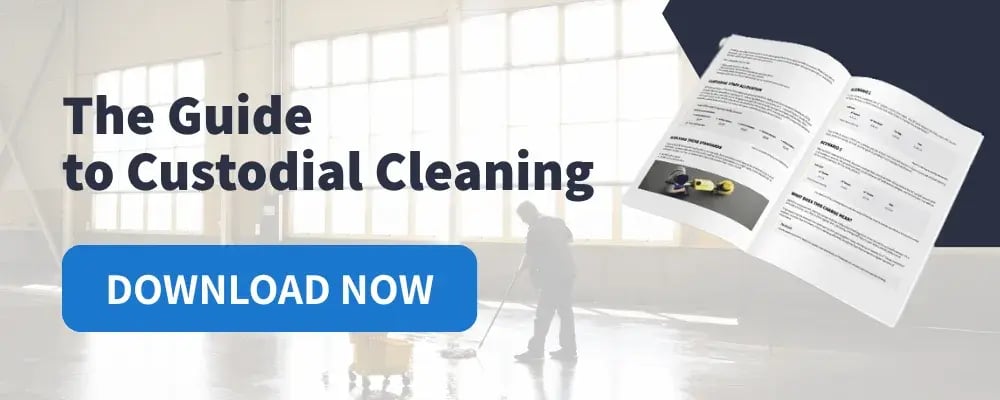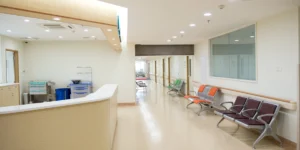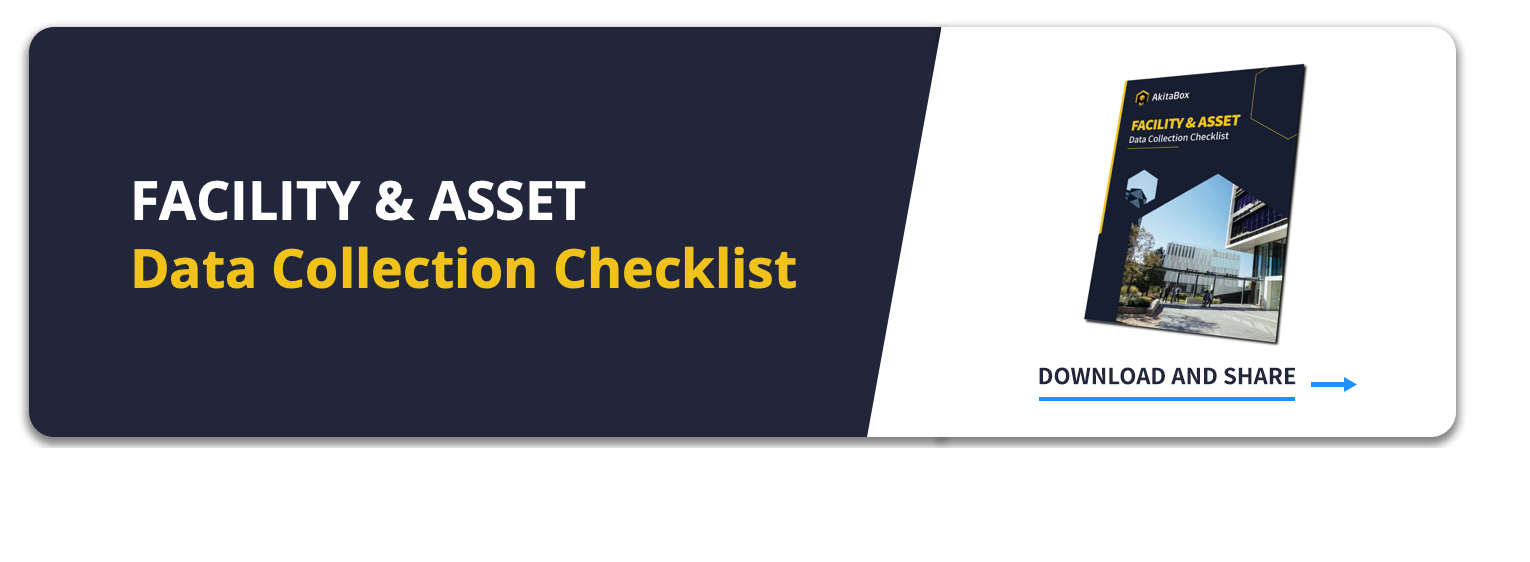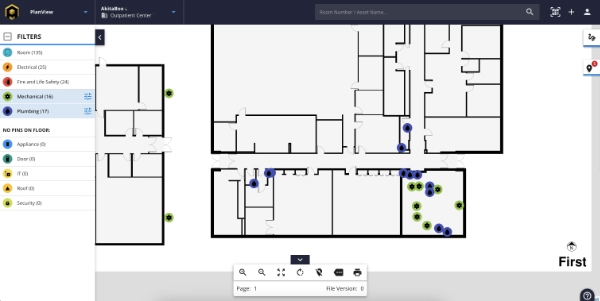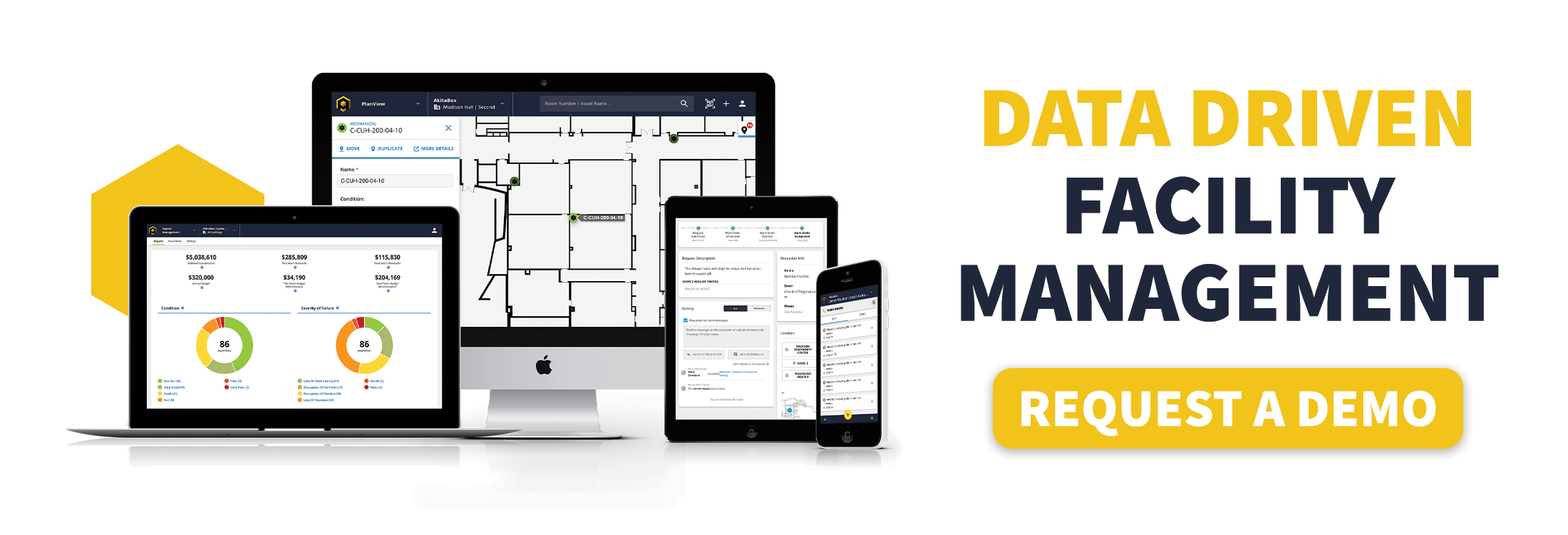When custodial teams are in the field cleaning, two zones of similar size could require vastly different amounts of time to clean properly. This often leads your team to feel overwhelmed, underutilized or spread too thin.
The main culprit in workload balancing issues comes down to uneven work assignments. This happens when staffing is based solely on square footage instead of calculating other important factors in your facilities. The good news is that there is a simple formula (and a handy guide) to calculate a custodial cleaning plan yourself.
In the AkitaBox Custodial Cleaning Guide, we take into account seven different guidelines when devising a formula for proper custodial workload balancing.
7 Guidelines for Creating A Custodial Cleaning Plan
1. Know the Square Footage of Your Buildings
The first step to create a custodial staffing plan is to understand your facilities’ square footage. There are different ways to look at your square footage, and it’s important to fully understand which one you should use when staffing. While Gross Square Feet (GSF) is important, what you really need to take into consideration is your facilities’ Net Cleanable Square Feet (NCSF). If you need a refresher on the different square footage definitions, you can view our post on those here.
2. Know Your Facility’s Floor Types
It’s critical to account for the different floor types and the time it takes to clean each type (i.e., carpet versus tile) when defining cleaning zones. By grouping your zones by floor type, you cut out time switching equipment and supplies, which helps staff complete their assigned zone more quickly.
3. Know Your Building’s Room Types
When is the last time you consulted your floor plans to inform your cleaning zones? Your cleanliness standards should match how a room is used. For example, a vacant office space doesn’t need the same attention as a high-traffic workroom. It’s essential to know which zones have a high concentration of rooms that require special attention in order to balance your team’s workload.
4. Know What Fixtures are in Each Room
Fixtures in your facilities are often one of the trickiest aspects of calculating workload balancing. These include items used daily such as toilets, sinks, door handles, cabinet pulls, windows, furniture or lamps. Or, they can be things that easily collect dust including eye wash stations, drapes, woodwork or air vents. The less time you spend swapping out equipment to clean each one, the better prioritized your zone will be.
5. Know Your Cleaning and Maintenance Equipment
It’s important to understand your roster of cleaning supplies and equipment and when (or when not) to upgrade. If you’ve been using the same equipment for years, it may cost your team extra time and frustration. Although equipment such as mops, brooms, vacuums, or floor waxers can last for years, newer makes or models customized for certain floor types in your facilities may deliver a higher standard of cleanliness or get the job done faster.
6. Have Best Practices Ready and Documented
Once you understand and define your space and inventory your equipment and assets, don’t forget to take the time to document best practices for cleaning and maintaining your facilities. Certain areas, such as restrooms, may require additional steps or procedures that should be noted and shared with the staff who are allocated to each custodial cleaning zone. A facility management software can help document these instructions and make them more visible to team members who need the information.
7. Use Your Facility Management Software to Communicate
The best way to pull together all the work you’ve done for your custodial cleaning plan is to utilize facility management software. If your team is currently paper-based or utilizing a bulky CMMS, switching to a simple, user-friendly facility management software that has a visual map interface could speed up cleaning times and improve communication. The right FM software will let your team log notes on anything that needs follow up, create work orders if something breaks and easily check tasks off a list when they’re complete.
Forming a Custodial Cleaning Plan
After you’ve pulled together the different facility data points for your plan, you’re ready to create a formula that will give you critical information for staffing, such as:
- How many square feet each team member can adequately clean
- What level of cleanliness each team member can strive for
- The most efficient way to schedule cleaning routes
- Whether you need to upgrade your cleaning equipment
- Whether you should consider hiring more staff or contract outsourced janitorial services
Ready to get started? Download our free Custodial Cleaning Guide to calculate your staff’s allocation and set your facilities up for long term success.
Worried about the accuracy of your facility’s space data? We’re happy to talk to you about our best-in-class data collection services so that you can easily manage your facility’s custodial, maintenance, and construction needs. Reach out to us to learn more.
